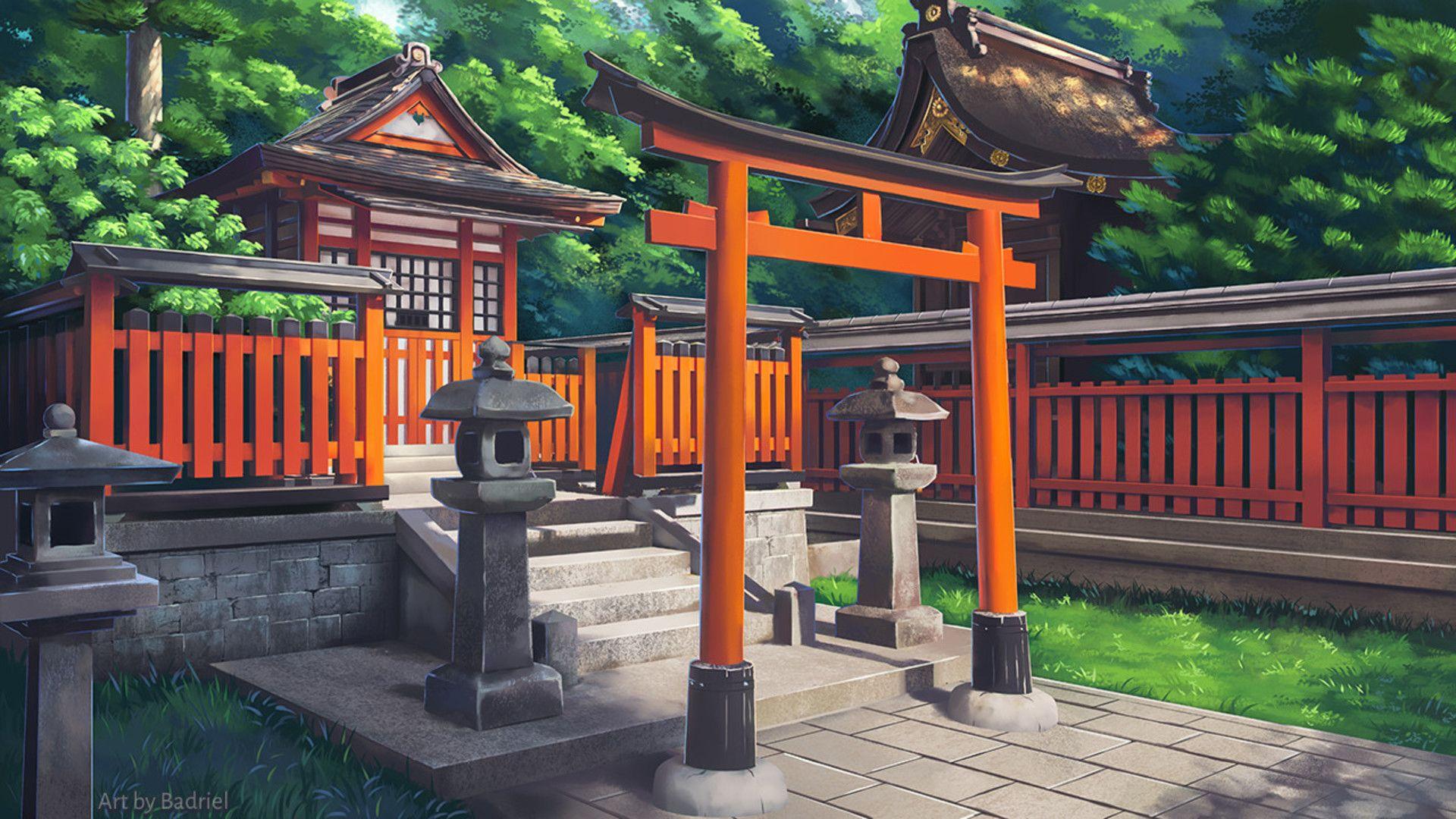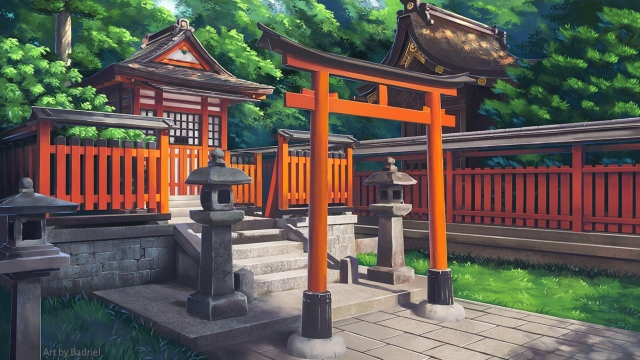
In the serene landscapes of Japan, where ancient traditions intertwine with the rhythm of modern life, Shinto shrines stand as timeless sanctuaries. These sacred sites, deeply rooted in the spiritual fabric of the nation, offer a glimpse into a world where nature and divinity coexist harmoniously. Each shrine is a reflection of the beliefs and customs that have shaped Japanese culture for centuries, inviting visitors to pause, reflect, and connect with the whispering voices of the kami.
As one wanders through the torii gates, along the gravel paths, and beneath the verdant canopies, a sense of peace envelops the spirit. The beauty of Shinto shrines transcends mere architecture; it is an experience that engages the senses and stirs the soul. From the intricate carvings and vibrant colors to the gentle rustling of leaves and the distant sound of ritual, these sacred spaces remind us of the profound connection between humanity and the divine. Journeying through the landscapes adorned with these shrines is not merely an exploration of physical sites but an invitation to embrace the essence of Shinto philosophy and its reverence for the natural world.
The Significance of Kami
In Shinto, the term kami refers to the divine spirits that inhabit the natural world. These entities can be found in mountains, rivers, trees, and even certain animals, reflecting a deep spiritual connection between nature and human existence. Each kami embodies unique traits and qualities, influencing the lives of those who honor them. For practitioners of Shinto, the presence of kami in their environment fosters a sense of reverence and gratitude towards the natural world.
The relationship between humans and kami is reciprocal. While people worship and offer respects through rituals and offerings at Shinto shrines, kami, in turn, are believed to offer protection, guidance, and blessings to their followers. This dynamic interaction reinforces the importance of maintaining harmony with nature and recognizing the spiritual essence present in all aspects of life. The veneration of kami is a cornerstone of Shinto practice, highlighting the belief that the divine is intertwined with the everyday experiences of individuals.
Furthermore, different shrines throughout Japan are dedicated to specific kami, each representing various elements of life, such as agriculture, health, and fortune. This diversity allows practitioners to connect with a kami that resonates with their personal lives and circumstances. Visiting these shrines becomes not just a spiritual practice but also a way to seek solace and direction amid life’s challenges, deepening the bond between the people and their revered kami.
神社めぐり
Architectural Marvels of Shinto Shrines
Shinto shrines in Japan are considered architectural masterpieces, each embodying the spiritual essence of Shinto beliefs while showcasing local craftsmanship. The designs often harmonize with the surrounding nature, reflecting the Shinto value of living in accordance with the natural world. Traditional architecture employs natural materials such as wood and stone, with intricate carvings and decorative elements that tell stories of deities and mythological events. These structures not only serve religious purposes but also act as cultural symbols, representing the unique identity of each region.
Many shrines feature distinctive elements that set them apart, such as the iconic torii gate, which marks the transition from the mundane to the sacred. The design of these gates varies, with some exhibiting simple lines while others display elaborate decorations. Inside the shrines, the honden, or main hall, typically houses the kami, the spirits or gods revered in Shinto. These honden are often elevated on platforms, symbolizing the connection between the earthly realm and the divine. The careful orientation and placement of each shrine exemplify the profound respect for nature and spirituality in Shinto architecture.
Throughout Japan, the architectural styles of Shinto shrines reflect both historical influences and regional characteristics. From the grandeur of Ise Jingu to the delicate simplicity of smaller local shrines, each structure tells a different story. The use of thatched roofs, sliding doors, and minimalistic interiors are designed to create a serene atmosphere conducive to worship and reflection. Visitors are often captivated by not just the beauty of these shrines, but also the sense of peace and continuity they evoke, drawing people back to the sacredness of ancient traditions.
Rituals and Festivals
Shinto shrines in Japan are the focal points for numerous rituals and festivals that celebrate the kami, or spirits, revered in the Shinto tradition. These events, deeply rooted in Japanese culture, often mark seasonal changes or significant agricultural milestones. Each shrine hosts its unique set of rituals, with local customs reflecting the community’s history and relationship with the kami. Participation in these celebrations fosters a sense of belonging and continuity for the people, as they honor the spirits that protect and sustain their lives.
One of the most vibrant festivals is the Matsuri, which occurs throughout the year across various shrines. These festivals often feature colorful processions, traditional music, and lively dance performances, all designed to entertain the kami and invite their blessings. Pilgrims and visitors alike partake in the festivities, offering prayers, food, and other items to the kami. These gatherings not only reinforce social bonds within the community but also attract visitors from afar, allowing them to experience the spiritual and cultural richness of Shinto practices.
Another significant aspect of rituals at Shinto shrines is the observance of rites of passage, such as Shichi-Go-San, a celebration for children aged seven, five, and three. Families visit shrines dressed in traditional attire to express gratitude for their children’s growth and to pray for their health and happiness. These ceremonies underscore the importance of family and tradition in Japanese culture, bridging generations through shared spiritual practices. The rituals and festivals that take place at Shinto shrines in Japan illustrate the living nature of this ancient faith and its integral role in daily life.
The Spiritual Journey
Visiting Shinto shrines in Japan is more than just a sightseeing experience; it is an invitation to embark on a spiritual journey. Each shrine serves as a gateway into a realm where the human and divine coexist. As one steps through the torii gate, the transition from the mundane to the sacred is palpable. The air changes, and a deep sense of tranquility envelops visitors. This marks the beginning of a personal exploration, where the act of paying respect and seeking blessings resonates with the core of one’s being.
The rituals performed at Shinto shrines are deeply rooted in tradition and aim to connect individuals with the kami, or spirits revered in Shinto belief. Visitors often engage in various practices, such as washing their hands and mouth at the temizuya, offering coins at the main hall, or spinning ema tablets on which they write their wishes. These actions foster a unique connection to the present moment, prompting reflection on one’s life and desires. As the scent of cedar and incense fills the air, visitors are reminded of the importance of nature in Shinto beliefs, enhancing their spiritual experience.
Ultimately, a visit to Shinto shrines in Japan culminates in a profound sense of inner peace and fulfillment. The serene environments, adorned with vibrant trees, serene water features, and meticulously crafted structures, serve as perfect backdrops for contemplation and connection. Many leave with not just memories but a renewed sense of purpose and an appreciation for the delicate balance between the spiritual and the everyday. This journey transcends mere tourism; it is an awakening to the whispers of the kami that dwell in the heart of Japan’s sacred spaces.






Recent Comments